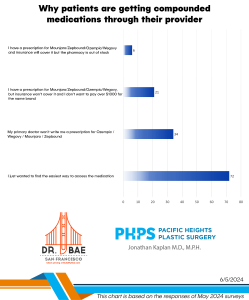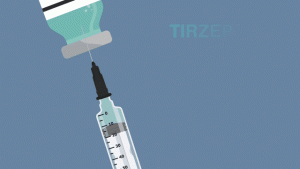
When we consider black swan events, which I’ve discussed here before, they’re often looked at in a negative connotation. And rightly so. But in an effort to find a silver lining to this pandemic, we should consider the pandemic as a black swan event, a once-in-a-lifetime opportunity to make a dramatic improvement in society. There are many changes that will occur post acute phase pandemic. As we enter this new chronic pandemic phase, things will change. Ironically, many changes will result in better customer service in the healthcare setting. One example? No more waiting in doctor’s offices!
No more waiting in doctor’s offices
If you’ve received an email from your doctor as they start to see patients in person again, you’ll notice a common thread. They all detail the changes you should expect when coming into the office. This is part of phase 2 in many states. Our office is no different.
Based on the San Francisco Mayor’s recent announcements and clearance by the Department of Public Health, hospitalizations due to the coronavirus are flat which means we can resume non-essential services as part of Phase 2 on Monday, May 18th.
Just as so many other physician office’s prepare for this next phase, we are implementing several safeguards as well. Our office building already requires that everyone entering the building wear a mask. But standalone offices are requiring the same of anyone entering their office.
Many offices will begin spacing appointments further apart so patients can be brought directly to the exam room after entering the office and having your temperature checked. That means no more waiting in our waiting room! This is a huge paradigm shift for patient care and customer service. Something that has been a long time coming.
Doctors and staff will also wear masks during consultations and treatments. To ensure patients don’t come into the office sick, staff will confirm they are not experiencing any symptoms associated with COVID-19 such as fever, cough, loss of taste (ageusia) or loss of smell (anosmia) before they leave home.
Elective surgery
For facilities that offer surgery, this will also be a new experience. Elective procedures that were originally postponed will be allowed to reschedule. That means rescheduling hip and knee replacements. Or cataract surgery. But for hospitals and surgery centers that have lost a great deal of revenue during the pandemic because they had to cancel elective procedures, they will probably not allow cosmetic procedures for the time being.
Why the difference? For patients undergoing cosmetic procedures, they must pay out of pocket. For the surgeon’s fee and also for the facility and anesthesia fee. When comparing cosmetic vs medically necessary, insurance-based procedures, hospitals get paid a small facility fee from cosmetic patients. So if the name of the game is prioritization of procedures as facilities ramp back up, they will preferentially go with better paying procedures, of which cosmetics is not.
Benefits of an office-based operating room
To be clear, this is not because cosmetic procedures are not allowed. On the contrary, new health orders are allowing any type of elective procedure, including, and without limitation, cosmetic and dental procedures. But there is a caveat. Facilities that resume elective procedures must have a protocol in place that ensures the safety of the surgical patients. And since it appears most hospitals and surgery centers will not prioritize cosmetic procedures, patients may find it’s easiest to schedule their cosmetic procedure in an office-based operating room like ours.
Here are several surgery specific protocols that facilities, including ours, will put in place to avoid the possibility of operating on a COVID+ patient. We are requiring all surgery patients to obtain a COVID test at one of the free testing centers in the Bay Area prior to their surgery date. As a follow up, we will also perform a rapid COVID-19 antibody blood test the morning of surgery. This is to rule in (or rule out) exposure. But also, this test will confirm they possess antibodies that confer immunity to the virus.
Flattening the curve
Based on recommendations by the country’s foremost experts, a complete return to normalcy via a vaccine or herd immunity, may take at least 18 months. Sadly, waiting to reopen society once there is absolutely no risk of contracting the coronavirus is not realistic or plausible. That is why we as a society must restart, with safeguards in place. Throughout this entire crisis, the overarching goal was to flatten the curve (and thus far, at least as San Franciscans, we have done that), not eliminate the curve.
In other words, the goal is to minimize the number of people that get COVID-19 at any one time so as not to overwhelm the healthcare system. To that end, the shelter-in-place and quarantine are relaxing in a way to allow life to move forward. And at the same time continue with various forms of surveillance and social distancing to minimize the risk of spread.
The irony is these changes will actually provide much better customer service than many expect from the healthcare system. From more convenient virtual consults to no more waiting in doctor’s offices. We can use this opportunity as a black swan event of improvement, not failure.
Click here for the original blog post written by Dr. Kaplan for BuildMyBod.




